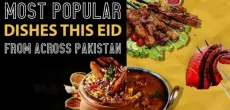[vc_row][vc_column][vc_column_text dp_text_size=”size-4″]Muslims all across the world have begun to celebrate Eid al-Adha, or the Festival of Sacrifice, which falls on the 10th day of Dhul Hijjah, the 12th and final month of the Muslim lunar calendar.
After Eid al-Fitr, which commemorates the conclusion of Ramadan, the month of fasting, Eid al-Adha is the second major Muslim feast.
Most countries will mark the date on Friday, July 31.
As the coronavirus pandemic spreads, numerous Muslim-majority countries, including Pakistan, the UAE, and Algeria, have declared limits on public meetings.
Here are five facts about Eid al-Adha:
Origins
Muslims believe that God tested the Prophet Ibrahim (Abraham) by commanding him to sacrifice his first-born son, Ismail (Ishmail).
Ibrahim was ready to obey the command, but God stopped him. Instead, he was instructed to slaughter an animal, most likely a lamb or sheep.
Both the Torah and the Old Testament tell a version of this story.
End of Hajj
The occasion also marks the conclusion of Hajj, a five-day pilgrimage that every able-bodied and financially sufficient Muslims are required to complete once in their lifetime. It is claimed that the trip cleanses the soul of sins and instills a spirit of equality, sisterhood, and brotherhood.

Eid prayers
Most Muslims begin their Eid celebrations by doing extra prayers in the morning.
Mosques are jam-packed with worshippers, with exterior seating arrangements intended to accommodate big crowds.
To combat the spread of the coronavirus, mosques will limit the number of participants this year, and big congregations will be prohibited in several nations.
Also Read: Apply Now for JS Bank’s Summer Internship Programme for Pakistani Youth!
Sacrificing an animal
Those who can afford it honour the event by sacrificing an animal that Muslims can eat – a goat, sheep, cow, or camel.
Special livestock markets are set up in various regions of the Muslim world for people to purchase an animal for the Eid sacrifice.
Throughout the coronavirus outbreak this year, various apps and websites have emerged in countries such as India and Bangladesh, where animals will be sold online to prevent virus exposure.

Meat distribution
The animal sacrifice includes a charitable component, as the individual paying for the sacrifice is required to share a portion of the proceeds to others.
The sacrificed animal’s meat is split into three groups: the person sacrificing it and their close family, extended family and friends, and people in need.
Some Muslims will pay the worth of an animal to one of several Muslim charities throughout the world that collect donations for remote animal sacrifices and distribute the meat to impoverished groups like as refugees, the elderly, and the disabled.
[/vc_column_text][/vc_column][/vc_row]











